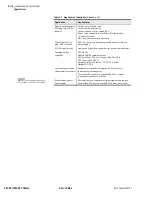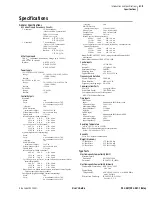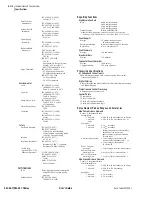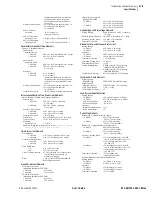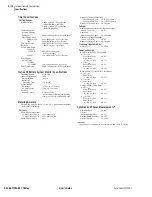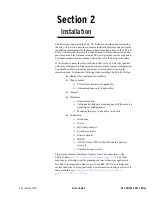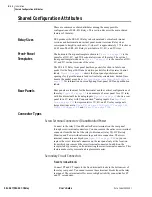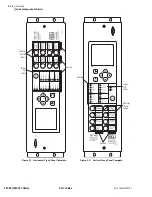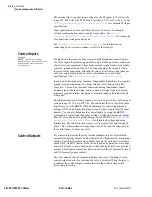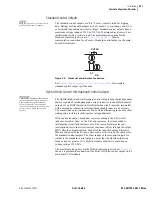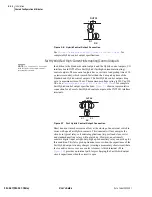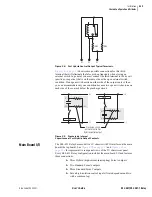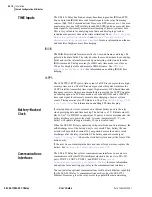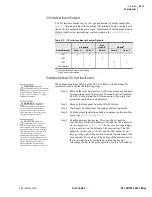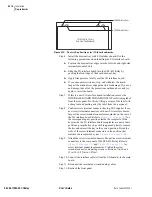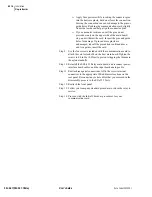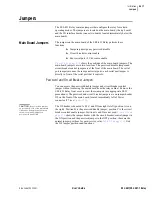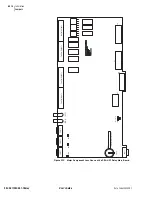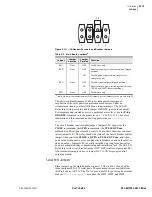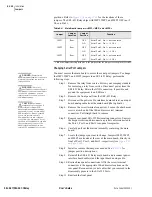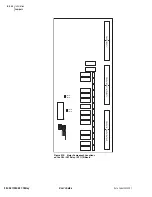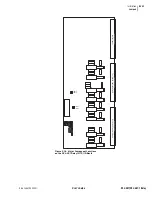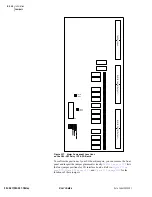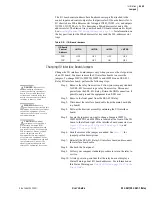
U.2.10
SEL-421/SEL-421-1 Relay
User’s Guide
Date Code 20020501
Installation
Shared Configuration Attributes
TIME Inputs
The SEL-421 Relay has high-accuracy time-keeping modes IRIG and PPS.
You can provide IRIG-B time code format signals to the relay from many
sources (SEL-2030 Communications Processor, GPS receiver, etc.). For even
greater accuracy, use GPS satellite-locked 1000 PPS (pulse-per-second) time
code signals for extremely accurate time stamping of power system events.
This is very valuable for analyzing event data and developing a look at
instantaneous power system states (state estimation). See
Data in the Applications Handbook
and
Measurements in the Applications Handbook
for more information on the use
and benefits of high-accuracy time keeping.
IRIG-B
The IRIG-B serial data format consists of a 1-second frame containing 100
pulses divided into fields. The relay decodes the second, minute, hour, and day
fields and sets the internal time clock upon detecting valid time data in the
IRIG time mode. Timing accuracy for IRIG-only time mode is as close as
150
m
s for a highly stable and accurate IRIG-B source. See
page U.4.66 in the User’s Guide
for information on enabling IRIG-B time
keeping.
1k PPS
The 1000 PPS (1k PPS) pulse train output of a GPS receiver provides a high-
accuracy time source. The GPS receiver generates this pulse train from the
1k PPS satellite-transmitted time signal. High-accuracy GPS-based time and
frequency receivers from various manufacturers provide the 1k PPS signal as
an ordering option. In PPS time mode, use both an IRIG-B and a 1000 PPS
time code signal for extremely accurate time stamping of power system
events. Timing accuracy for PPS mode is
±
10
m
s. See
, for information on enabling PPS time keeping.
Battery-Backed
Clock
If relay input power is lost or removed, a lithium battery powers the relay
clock providing date and time backup. The battery is a 3 V lithium coin cell,
Ray-O-Vac
â
No. BR2335 or equivalent. If power is lost or disconnected, the
battery discharges to power the clock. At room temperature (25° C), the
battery will operate for approximately 10 years at rated load.
When the SEL-421 Relay is operating with power from an external source, the
self-discharge rate of the battery only is very small. Thus, battery life can
extend well beyond the nominal 10-year period because the battery rarely
discharges after the relay is installed. The battery cannot be recharged.
shows the clock battery location (at the front of the
main board).
If the relay does not maintain the date and time after power loss, replace the
battery. See
Replacing the Lithium Battery on page 2.44
.
Communications
Interfaces
The SEL-421 Relay has several communications interfaces you can use to
communicate with other IEDs (intelligent electronic devices) via EIA-232
ports: PORT 1, PORT 2, PORT 3, and PORT F. See
Communications Interfaces in the Reference Manual
for more information
and options for connecting your relay to the communications interfaces.
You can install an optional communications card to obtain Ethernet capability
for the SEL-421 Relay. A communications card, such as the SEL-2701
Ethernet Processor, gives the relay access to popular Ethernet networking
Summary of Contents for SEL-421
Page 8: ...This page intentionally left blank ...
Page 30: ...This page intentionally left blank ...
Page 110: ...This page intentionally left blank ...
Page 204: ...This page intentionally left blank ...
Page 284: ...This page intentionally left blank ...

